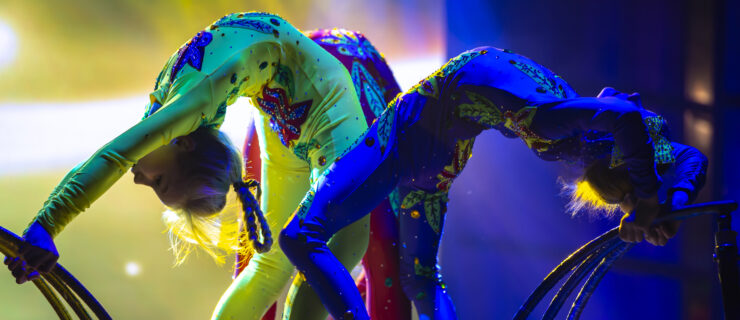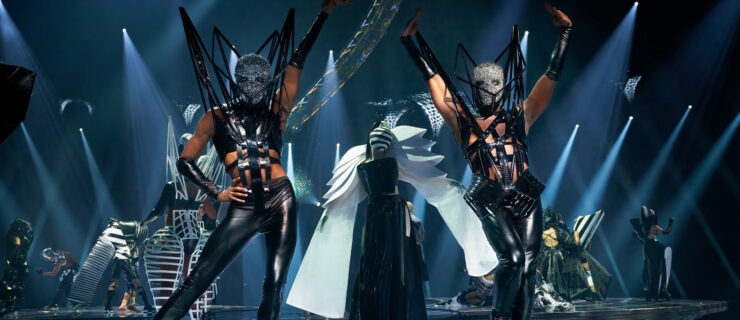My Experience as a Black Ballerina in a World of Implicit Bias
I remember the first year that I competed at the Youth America Grand Prix. I was 17 years old and particularly excited to be participating in a competition that focused on ballet. First up for my age group was classical, where I danced Kitri’s Act I variation showing off all of my strengths: personality, speed and the ability to jump and turn. I felt really proud of how it went—imperfect, but not terrible.
The next day I performed my contemporary solo, a dance I choreographed to a jazzy version of The Beatles’ “Blackbird.” I danced in bare feet with my natural hair out. Halfway through the solo I forgot the steps and improvised my way through the rest. I felt mortified, defeated and heartbroken. Later that day, I was pulled aside by one of the competition’s organizers congratulating me (what?) and telling me that they wanted to work to get me a scholarship to The Ailey School. I had already participated in Ailey’s intensive the summer prior and had discovered that modern dance was not the language in which I wanted to develop. I wanted to do ballet.
At the time I didn’t understand why Ailey kept being pushed on me, but looking back I understand that in this moment, the reason had not much to do with my dancing and more to do with the texture of my hair and the color of my skin.
Well-intended ignorance. The ballet world is full of it. It took me years to see it. Why were the same three places—Dance Theatre of Harlem, Alvin Ailey American Dance Theater and Houston Ballet—always mentioned to me when people recommended where to dance? Eventually it dawned on me that while two of these are well-known as historically Black companies, all three organizations had been known to have women of color at the forefront: Virginia Johnson, Judith Jamison, Lauren Anderson.

Fentroy in William Forsythe’s Pas/Parts
Angela Sterling, Courtesy Boston Ballet
These suggestions are examples of what I consider well-intended ignorance, also known as implicit bias or micro-aggressions in today’s conversations regarding race. These subtle comments are put in place to remind you to stay within the box that society is comfortable with you residing in. Don’t look too eccentric, don’t get too angry, don’t go into this neighborhood, don’t, don’t, don’t… The ballet world, with its Eurocentric history of extreme racial discrimination and elitism, is no exception to this. “You don’t have the right body type for ballet, you couldn’t possibly dance there because there are no others like you, powder your skin lighter so you blend in, you’re so good at contemporary.” And also, the whispers behind our backs: “They have to be featured because they’re the only Black person.” All of this amounts to the realization that no matter what work you put in, your dancing will always be overshadowed by your skin color.
These are the experiences of most dancers of color: your friends, your peers, your teachers. Yet our resilience is clear. We continue to show up because despite the systemic racism that follows us like a shadow every day, we have the right to be here.
I went on to become a principal dancer with Dance Theatre of Harlem for several years, where I found my voice as a Black ballerina. I embody their message proudly, and when I felt the time was right I went on to join Boston Ballet. Here, I am currently the only African American woman on the company’s roster, and the first in 10 years. Since joining this company, I have risen to the rank of soloist.
So, with the outrage we are seeing over the murder of George Floyd, which has sparked the kindling of oppression that has plagued people of color for years, you might be asking yourself:
How are my friends of color feeling?
In short: angry, sad, frustrated, exhausted. Personally, I’ve spent much of this time protesting (on crutches, I might add) and using my words and experiences to help shape the understanding of those around me. It’s incredibly taxing—but I think, above all, our entire community is empowered to fight with everything we have until we are seen as equals.

I love my friends of color. How do I tell them that and what can I do to help them?
Start by checking in on them. This is a traumatic time for our entire community, but reaching out to those close to you shows that you support them. While they might not always have the words or energy to express how much it means to them (because quite frankly, we are exhausted), it matters.
In having these conversations, listen to them and really hear what they are saying. As uncomfortable as it might be, try your hardest to pivot your feelings away from yourself. This isn’t the appropriate time to show your empathy by inserting your personal experiences because, in a way, it belittles the severity of what we are experiencing right now.
Consider finding ways to donate to the cause. Do your research and find what place you want your money to go (historically black dance institutions, MoBBallet, Black Lives Matter, and the George Floyd Memorial Fund to name a few). If you need to raise money in order to donate, get creative with how to do that and don’t be ashamed to tell the world what you’re doing it for. If you’re crafty you can make items and sell them, if you’re good at teaching you can teach classes for the sole purpose of donating your income, the options are endless.
And then what?
Continue to educate yourself about why this is happening. Learn about the history of Black culture and oppression. Writings by authors like Ta-Nehisi Coates, Toni Morrison, Maya Angelou and James Baldwin are a good place to start.
Search for and sign petitions that demand racial equality. One example that is particularly relevant to us as dancers is the Racial Equality in the Ballet World petition found on change.org.
Learn about the history of organizations and steer your support towards brands that don’t promote hate or have a racist history or tendencies. The internet is an excellent tool for learning about the history of just about any organization if you take the time to dig in a little.
Keep the conversation going! You have a voice, too, and the world needs to hear what you have to say!
My fight isn’t over yet—and neither is the fight of my fellow Black and Brown dancers. We will not stop until this art form becomes a space in which Black and Brown people are welcomed, respected and valued for their merits and not the color of their skin. We will not stop until all people are recognized as equal human beings.




